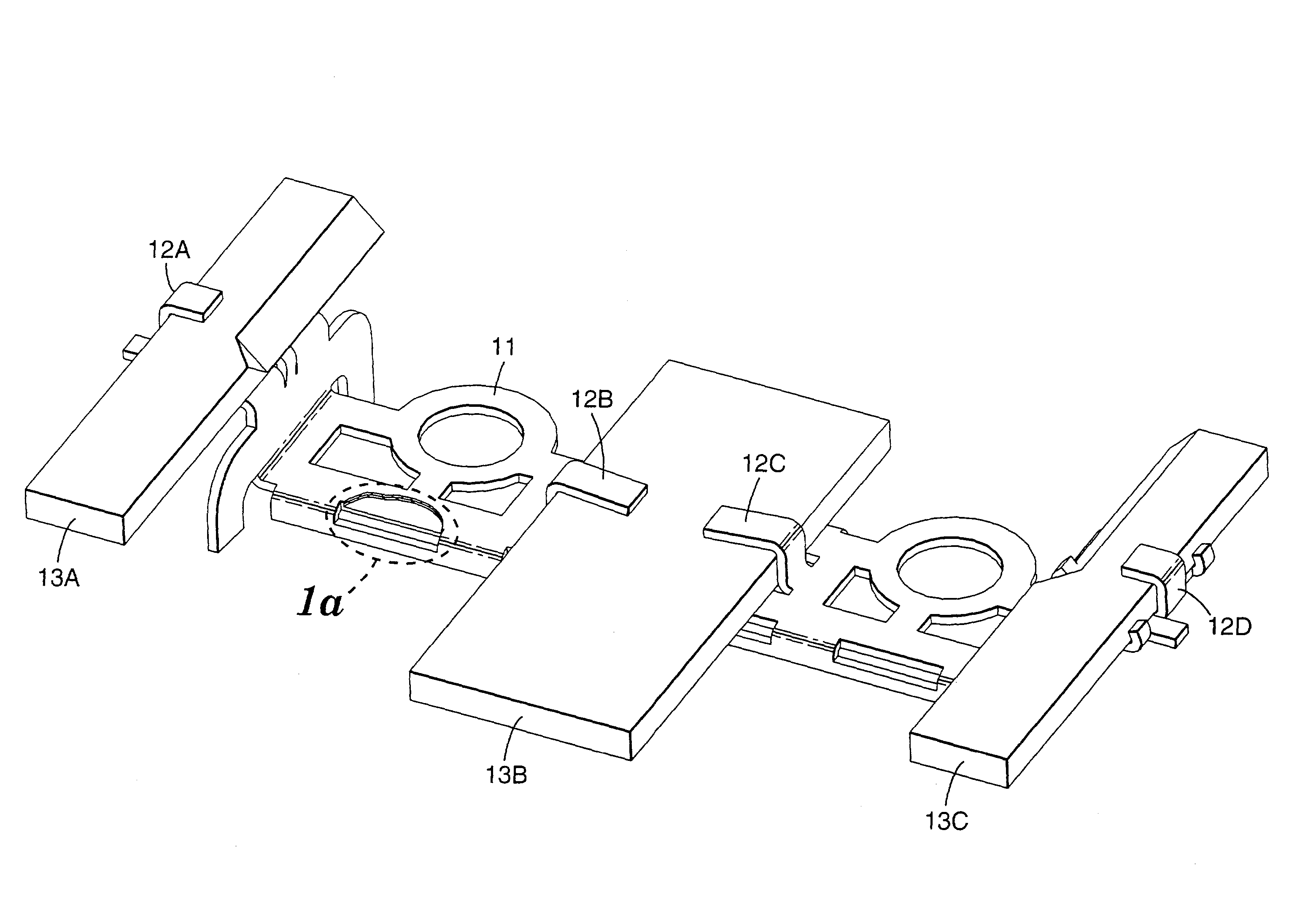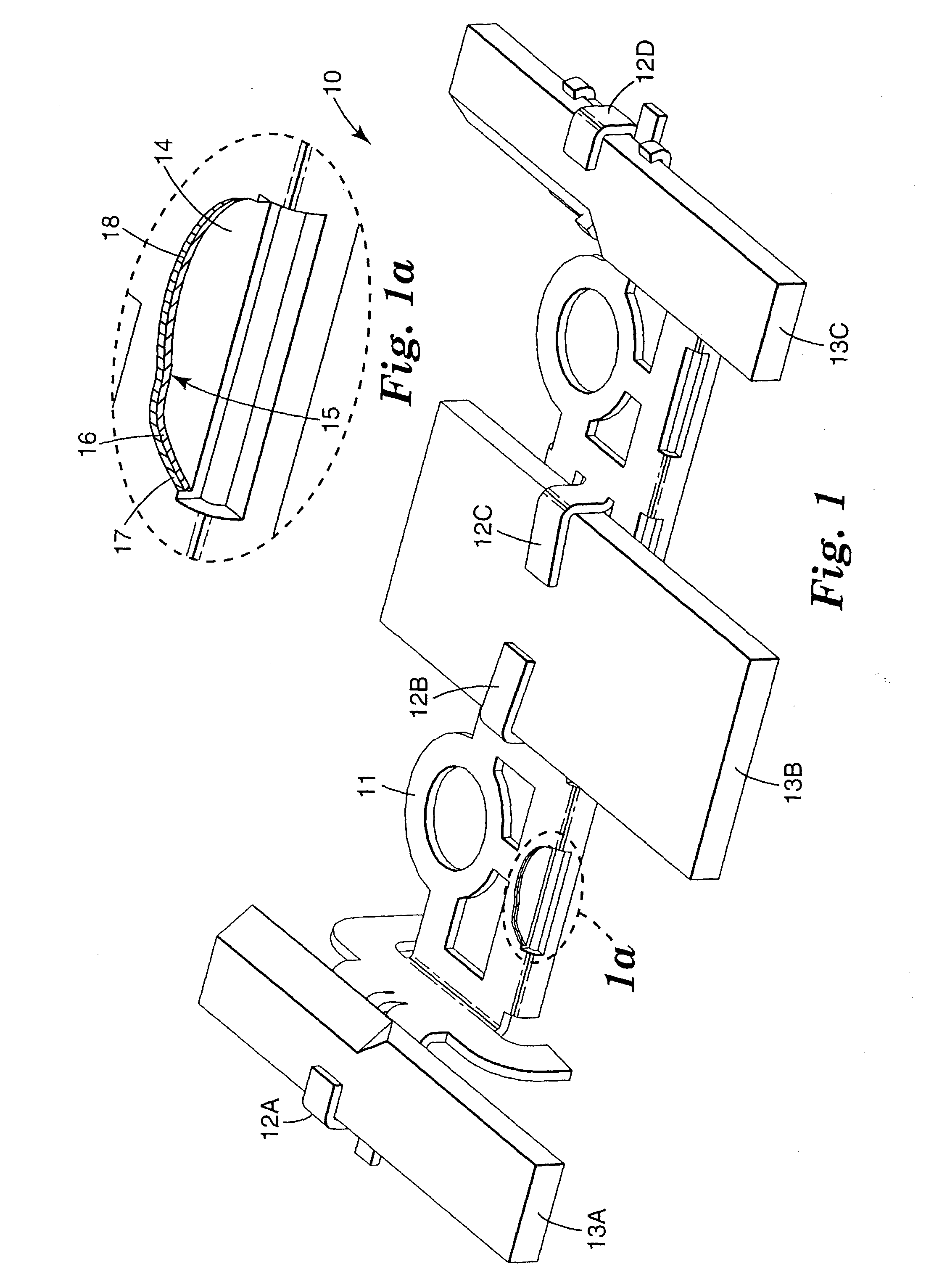Metal matrix composites, and methods for making the same
a technology of metal matrix and composites, applied in the direction of axially engaging brakes, mechanical devices, brake types, etc., can solve the problems of inability to machining or welding, and inability to meet the requirements of machining or welding
- Summary
- Abstract
- Description
- Claims
- Application Information
AI Technical Summary
Benefits of technology
Problems solved by technology
Method used
Image
Examples
example 1
[0163] An insert holder was made as follows. Aluminum sheet stock, 1.5 mm in thickness, consisting of 6061 aluminum alloy that had been heated-treated with a standard T4 heat treatment (obtained under the trade designation "6061-T4" from Vincent Brass and Aluminum, St. Paul, Minn.) was laser-cut to obtain the configuration shown in FIG. 8. The laser used for cutting the aluminum sheet stock was a 1500 Watt, numerically controlled CO.sub.2 laser (obtained from Coherent, Inc., Santa Clara, Calif., and integrated into a numerically controlled laser cutting system by Laser Manufacturing, Inc., Somerset, Wis.). The insert holder was designed to hold three inserts, two with dimensions 72 mm by 15.5 mm by 5 mm and one with dimensions 82 mm by 35 mm by 5 mm.
[0164] The cut sheet was bent with pliers along the fold lines a, b, c, d, e, f, g, and h shown in FIG. 8A to make the shape shown in FIGS. 8A and 8B to provide an insert holder. Dimension A is 158.2 mm, B is 35 mm, C is 126.2 mm, D is 1...
example 2
[0176] A portion of an exemplary holder according to the present invention was prepared as follows. A piece of sheet stock of 6061 aluminum (obtained under the trade designation "6061-T4" from Vincent Brass and Aluminum, St. Paul Minn.) was cut by Eagle Tool (Spring Lake Park, Minn.) using a water-jet cutting process. The resulting sheet was 0.095 inch (0.24 cm) in thickness. The cutout piece had dimensions 0.367 inch by 0.095 inch by 6.00 inch (0.93 cm by 0.24 cm by 15.24 cm). The edges of the aluminum piece were smoothed using 150 grit sandpaper to remove the slight ripples from water-jet cutting. To facilitate later insertion of the portion into a die, one end of the aluminum piece was tapered using 150 grit sandpaper (available from 3M Company, St. Paul, Minn. under the trade designation "WETORDRY") to a 0.327 inch by 0.055 inch (0.83 cm by 0.14 cm) section over the final 0.40 inch (1.0 cm) of its length.
[0177] The resulting aluminum piece was then plated (by Co-Operative Platin...
PUM
| Property | Measurement | Unit |
|---|---|---|
| thickness | aaaaa | aaaaa |
| thickness | aaaaa | aaaaa |
| length | aaaaa | aaaaa |
Abstract
Description
Claims
Application Information
 Login to View More
Login to View More - R&D
- Intellectual Property
- Life Sciences
- Materials
- Tech Scout
- Unparalleled Data Quality
- Higher Quality Content
- 60% Fewer Hallucinations
Browse by: Latest US Patents, China's latest patents, Technical Efficacy Thesaurus, Application Domain, Technology Topic, Popular Technical Reports.
© 2025 PatSnap. All rights reserved.Legal|Privacy policy|Modern Slavery Act Transparency Statement|Sitemap|About US| Contact US: help@patsnap.com



